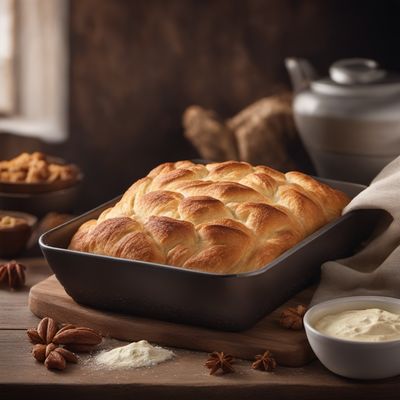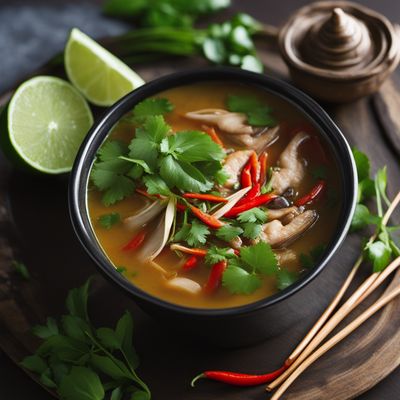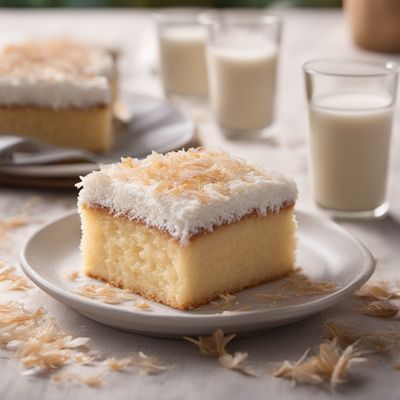
Ingredient
White sugar
The Sweet Essence of White Sugar
White sugar, also known as granulated sugar, is a fine crystalline substance derived from sugarcane or sugar beets. It has a neutral flavor and dissolves easily, making it a versatile sweetener for various recipes. The texture of white sugar is granular and dry, with a bright white color that adds visual appeal to dishes.
Origins and history
The history of sugar dates back thousands of years, with its cultivation and use originating in ancient India. It was later introduced to the world through trade routes, becoming a highly sought-after commodity. The production and consumption of sugar played a significant role in shaping global economies and cultural practices, including the development of sugarcane plantations and the rise of the sugar industry.
Nutritional information
White sugar is a source of empty calories, providing only energy without any significant nutritional value. It is important to consume white sugar in moderation as part of a balanced diet. Excessive consumption of sugar has been linked to various health issues, including obesity and dental problems.
How to select
When selecting white sugar, look for brands that are finely granulated and free from lumps or clumps. The sugar should have a bright white color and a clean, sweet aroma. Avoid sugar that appears moist or has an off-putting odor, as this may indicate poor quality or contamination.
Storage recommendations
White sugar is produced on a large scale by extracting juice from sugarcane or sugar beets, which is then processed and refined to remove impurities. This process involves multiple stages, including clarification, evaporation, crystallization, and drying. It requires specialized equipment and expertise, making it impractical for amateur production.
Preparation tips
To maintain the freshness and prevent clumping, store white sugar in an airtight container in a cool and dry place, away from direct sunlight. Avoid exposure to moisture, as it can cause the sugar to harden or form lumps. Proper storage will help preserve the quality and texture of white sugar for an extended period.
Substitutions
White sugar is a versatile ingredient that can be used in a wide range of recipes. It is commonly used in baking to sweeten cakes, cookies, and pastries. It is also a popular choice for sweetening beverages such as coffee, tea, and cocktails. Additionally, white sugar is used in the production of jams, jellies, and confectionery items.
Availability
White sugar is widely available in grocery stores, supermarkets, and convenience stores worldwide. It is a common pantry staple found in households and professional kitchens alike.
More ingredients from this category
Recipes using White sugar » Browse all

Nadalin - Italian Christmas Star Bread
Festive Star Bread: A Delightful Italian Christmas Tradition

Austrian Mohnzelten with Sweet Poppy Seed Filling
Heavenly Delights: Austrian Mohnzelten - Sweet Poppy Seed Pastries

Masna Pogača - Bosnian Flaky Bread
Golden Layers of Bosnian Flaky Bread

New Nordic Baklava
Nordic Twist on a Turkish Classic: New Nordic Baklava

Homemade English Muffins
Fluffy Pillows of Delight: Homemade English Muffins

Spicy Thai Lemongrass Soup
Fiery Lemongrass Delight: A Burst of Spices in Thai Soup

Pakistani Spiced Rum Cake
Exotic Fusion: Pakistani Spiced Rum Cake with a Jamaican Twist

Nikujaga - Japanese Beef and Potato Stew
Umami Delight: Japanese Beef and Potato Stew

Malaysian Chinese Style Spiced Plum Pudding
Fragrant Spiced Plum Pudding: A Malaysian Chinese Delight

Tuvaluan Coconut Delight
Tropical Coconut Meringue Slice

Hawaiian Mpanatigghi
Tropical Fusion: Hawaiian Mpanatigghi Delight

Burundian Almond Cake
Majestic Almond Delight

